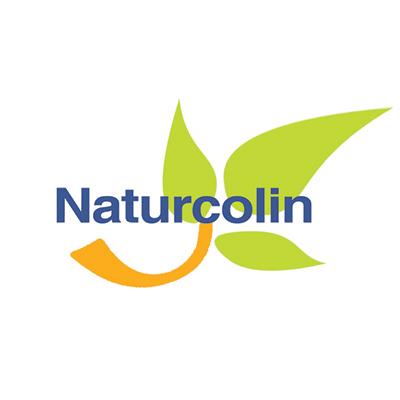
Content sponsored by:
LIPTOSA
Choline in animal nutrition: Its role, sources and new approaches
Published: March 3, 2021
Source : Carlos López, Export Area Manager at Liptosa
Although the first mentions to “choline” date from XIX century (In 1850, Theodore Gobley already described a substance “lecithin”, and then, in 1862, Adolph Strecker heated lecithin from bile, which generated a new nitrogenous chemical termed “choline”), choline’s role nutrition was not well known until 1930s.
Since then, several researches have established it as an essential nutrient, which main functions could be summarized in four categories (Zeissel 2006, Garrow 2007, Rajalekshmy 2010).
1. As required constituent of phospholipids, choline is essential for building and maintaining cell structures, as well as to ensure the normal maturation of the cartilage matrix of the bone and prevent the perosis in broilers.
2. Choline plays an essential role in the fat metabolism in the liver, preventing abnormal accumulation of fat within hepatocytes (fatty liver) by promoting its transport as lipoprotein and lecithin or by increasing the utilization of fatty acids in the liver.
3. Choline is a precursor of acetyl choline synthesis, which makes possible the transmission of nerve impulses.
4. Choline furnishes labile methyl groups for formation of methionine from homocysteine and of creatine from guanidoacetic acid.
Also, since choline contains biologically active methyl groups, methionine can partly be spared by choline and homocysteine.
Although, in contrast with most vitamins, choline can be synthetized by most species, this synthesis may become insufficient (not in enough quantity or not fast enough) to satisfy the animal´s needs, making choline an essential component of the diet.
Choline is present in several feed ingredients traditionally used for feed formulation – 7374 mg/ kg DM rapeseed meal oil; 2899-3182 mg/kg DM soybean meal oil; 1743 mg/kg DM wheat meal; 1162 mg/kg DM barley; 617 mg/kg DM maize (INRA-CIRAD-AFZ tables), but little is known about its bioavailability in them, and differences are expected based in crop growth conditions, treatment, season of the year…
Therefore, to overcome the variation in raw material concentration and the uncertainty of bioavailability, an adequate choline supplementation is required, supplying both the essential and non-essential needs of the different animal species.
The most common choline source is Choline chloride (CC), produced by chemical synthesis – by reaction of methanol and ammonia, which gives rise to trimethylamine (TMA) and subsequent reaction of this with ethylene oxide gives choline. Choline chloride is obtained by reacting choline with HCl -
Commercially, CC is available in both, liquid and powder form, with differences regarding choline chloride content and equivalent choline activity:

However, despite widely used, chemical choline chloride shows some disadvantages
- CORROSIVITY: Liquid choline chloride is very corrosive, requiring special storage, transport and handling procedures.
Additionally, choline chloride is highly destructive to vitamins, decreasing its stability in the premixes containing it (Coelho et al. reported Vitamin K retention in 6 months period was 57% lower in a vitamin premix containing CC than in a premix without it, and 50%, 40%, 37% lower retention for Vitamin C, B1 and A respectively).
Additionally, choline chloride is highly destructive to vitamins, decreasing its stability in the premixes containing it (Coelho et al. reported Vitamin K retention in 6 months period was 57% lower in a vitamin premix containing CC than in a premix without it, and 50%, 40%, 37% lower retention for Vitamin C, B1 and A respectively).
- HIGROSCOPICITY: Chemical choline chloride is highly hygroscopic, attracting moisture to preparations containing it, which makes uniform mixing difficult, leading into fluidity problems in the final product.
- TMA content: Trimethylamine content should be less than 200-300 mg/Kg. Anyway, even if within the permitted levels, 2/3 of the choline are transformed into TMA during the digestion process, limiting the CC inclusion rate.
- INCLUSION RATE: Together to the low choline equivalent activity (43-65%, as shown in above table), only 1/3 of the choline is absorbed, requiring a higher inclusion rate in the diet.
Considering the problems faced by feed/premix manufactures due to the above-mentioned disadvantages, new choline sources have emerged in the market as alternative to the chemical choline chloride.
LIPTOSA, company specialized in the manufacturing of phytobiotic and nutraceutical solutions have launched recently NATUR COLIN, a product that represents an effective replacer to chemical choline chloride, overcoming its technological disadvantages, and, at the same time, providing a more competitive choline source and a positive effect over the zootechnical parameters.
NATUR COLIN is a powdered nutraceutical product based on a selected combination of botanicals and plant extracts as a source of phosphatidyl choline, phospholipids, methyl group donors and other phytogenic compounds which are intimately related with the choline functions.
The different active components of Natur Colin work sinergically and through multiple ways in order to completely fulfil the choline functions, representing therefore an alternative choline vegetal source, which pays special attention to the activity over the fat metabolism and as methyl group donor.
The use of a vegetal choline source will allow not only to get an improvement in the zootechnical performance of the animals but counteract the disadvantages of chemical CC:
- Unlike CC, Natur Colin is not corrosive and it is not destructive against the vitamins present in the feed / premixes, allowing to extend its shelf life and its direct inclusion in vitamin premixes (Tavcar-Kalcher and Vengu reported that the concentration of vitamins in premixes containing CC and stored for 12 months could be up to 88% lower than premixes without CC).
- Furthermore, Natur Colin solves the hygroscopicity problem related to the use of CC, of great incidence in markets facing high temperatures and humidity.
- As mentioned before, just 1/3 of the choline in CC is absorbed, while the other 2/3 are transformed into TMA, which limits its inclusion rate. Natur Colin shows a much higher safety margin, with no limits in its dosages.
- Natur Colin, at a low inclusion rate replaces 100% CC, leaving more available space in the feed formula for other ingredients. Various studies have shown that 100 gr. Natur Colin effectively replace 156 gr. pure choline (300 gr. CC 60%) with the guarantee to reach at least the same production performance. (Table 1).
Higher inclusion rates of Natur Colin (+20%) are also recommended in those cases where we want not just to replace CC but provide an extra support to the animals, which will be reflected in a better animal performance, due largely to its activity as regulator of the liver metabolism. (Table 1)

In a study conducted at the Service of Pathological Anatomy from the Complutense University in Madrid, livers from a group of 69-weeks old hens fed with CC until then (A) were compared with livers from the same group of hens fed with Natur Colin the following 12 weeks -until 80 weeks old (A).
 The histological sections showed a diffuse cytoplasm vacuolization in the group A. However, after 12 weeks consuming the product, the liver histological section B shows a liver with a normal aspect, the cellular damage has been reversed. If it were not for Natur Colin, an irreversible liver degeneration would have probably occurred.
The histological sections showed a diffuse cytoplasm vacuolization in the group A. However, after 12 weeks consuming the product, the liver histological section B shows a liver with a normal aspect, the cellular damage has been reversed. If it were not for Natur Colin, an irreversible liver degeneration would have probably occurred. The use of Natur Colin represents an effective and safe alternative to the use of chemical choline chloride, allowing not only a 100% replacement and overcome its technological disadvantages, but, at the same time, provide a tool to optimize production performance.
*Certain information associated with products, their composition and claims may be different depending on the geographical region and may not be applicable in all countries. Liptosa reserves the right to adapt to the requirements and legislation in each case.
The information and technical recommendations provided herein are based on Liptosa's current knowledge and experience.
Liptosa reserves the right to update the information and arguments contained in this platform, as well as to make any changes to this information or recommendation at any time, without prior or subsequent notice.
Related topics:
Mentioned in this news release:

Influencers who recommended :
Ewa Sujka, David RevillaRecommend
Comment
Share
29 de junio de 2022
I have been using Cholin extensively in dairy formulation and nutraceutical products for cows in transition . I am interested knowing details of your product Natural cholin. Could you please share technical sheet. Thanks
Recommend
Reply

27 de junio de 2022
I think this statement is incorrect.
How about the production of acetylcholine by neurons as a neurotransmitter?
Also how about the synthesis of phospholipids by not only the liver but also extrahepatic tissues in cell signaling and metabolism?
Please see “Principles of Animal Nutrition” by Guoyao Wu, CRC Press, 2018.
Recommend
Reply
Recommend
Reply
DCL Nutrition + Santé animale
23 de mayo de 2021
I totally agree, each nutrient has several functions, that is why I do not like the concept of replacing some of them with others that could be related, or be converted, some times this conversion is not 100% efficient, specially under stress conditions, if under those stress conditions, one function is increased, the extra dosage of the replace nutrient Will not help at all, example, conditional essential nutrients as cysteine or selenium in glutation peroxidase activity, a deficiency of those nutrients can not be replaced by increasing betain or Vitamin E.
Recommend
Reply
3 de mayo de 2021
With regard to choline in Animal Nutrition, I would like to state that choline is used to remove fat from the liver and protects the liver against those toxicants which result in fat accumulation in liver.
Recommend
Reply
Elanco
27 de abril de 2021
Dear Dave,
As mentioned in the article, both are our own studies carried out by Liptosa, one with collaboration of Complutense University of Madrid, and the table 1 is an analysis of several dose-reponse trials.
The use of vegetal coline has many advanatges for the animal and for the feed manufacturer, therefore I suppose for extrusion industry could be of much interest to evaluate this parameter.
Recommend
Reply


NATURCOLIN
NATURCOLIN of Liptosa is a source of natural choline for all premixes concentrated and feed production, 100 % bioavility, replacemet of choline chloride.
Suggested link
25 de abril de 2021
As mentioned here, the relative value of choline in mechanically-extracted oilseed meals should be determined. In particular, this is important when extrusion is used before pressing in order to more-fully liberate the lecithin (choline containing) from the seed.
Recommend
Reply
Natural Remedies Private Limited
17 de octubre de 2022
Hello Carlos Lopez Tome,
Does NaturColin also posses methyl donation property???
Dr Ayushi
Recommend
Reply
21 de junio de 2022
Good day,
It is quite intresting to note that the use of Natural choline source has been reviewed and shown to improve zootechnical animal performance and overcome the technical disdavantages associated with the practical use of Chemical Choline source (CC) in feed manufacture.
The following questions would then arise:
1. Would there be enough sustainable production capacity of the Natural source to support potential requirement. ?
2. To what extent has this technolgy been adopted in other regions and how are results ?
Recommend
Reply
31 de mayo de 2022
Dear Carlos,
Could you please share references, especially related to absorption amounts of choline in CC and in raw materials?
Recommend
Reply

Would you like to discuss another topic? Create a new post to engage with experts in the community.









